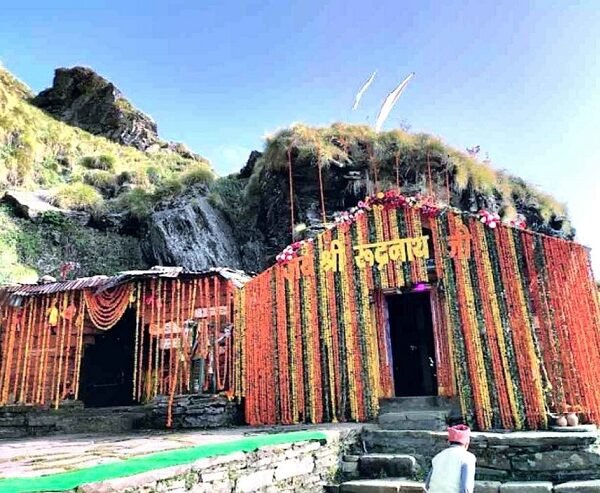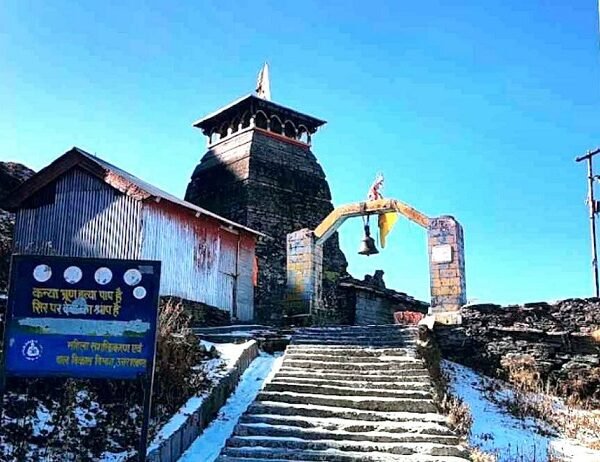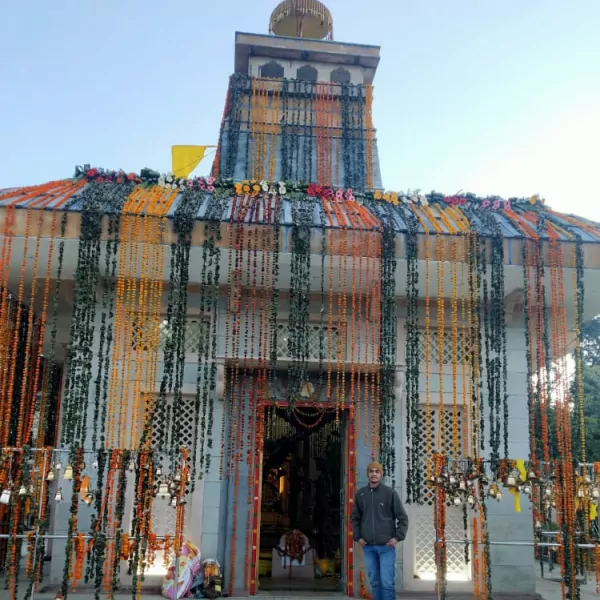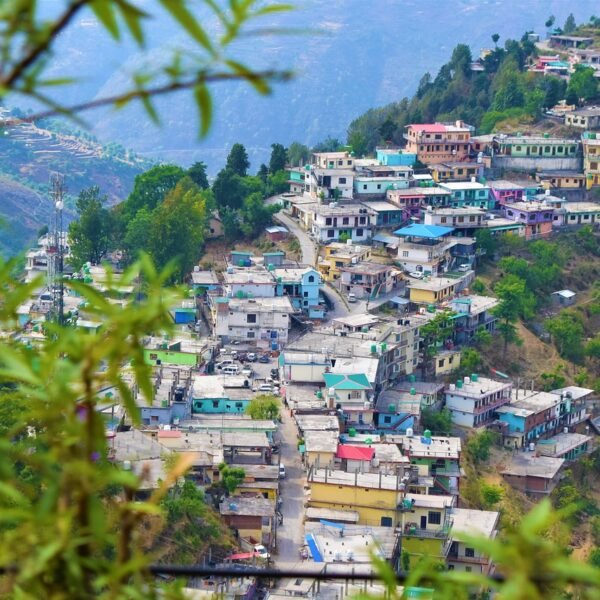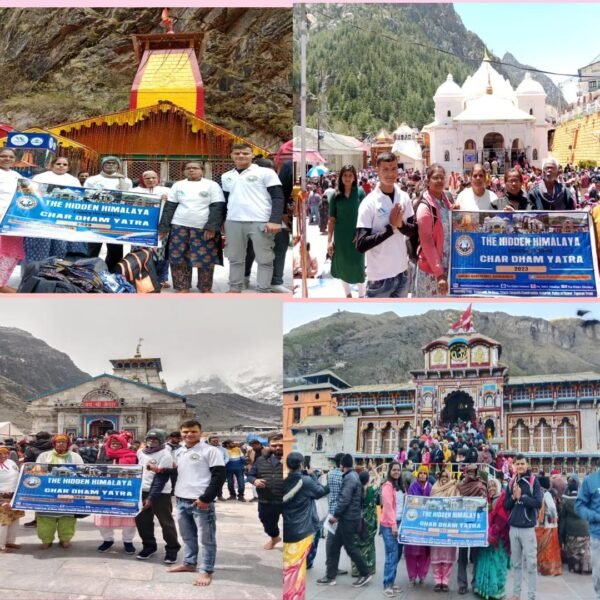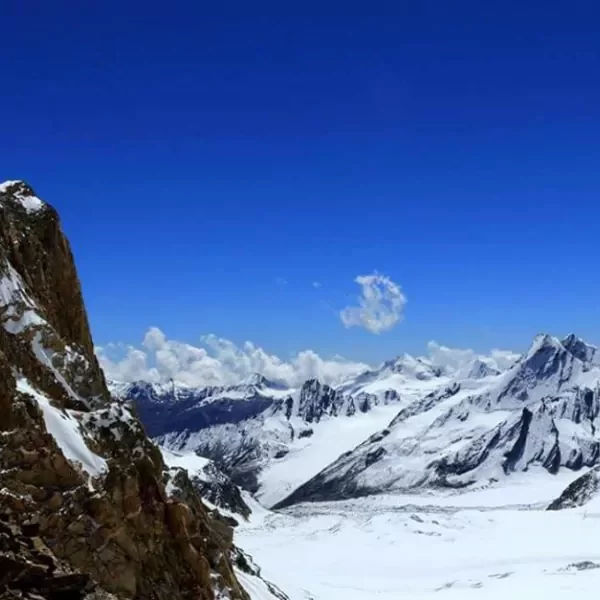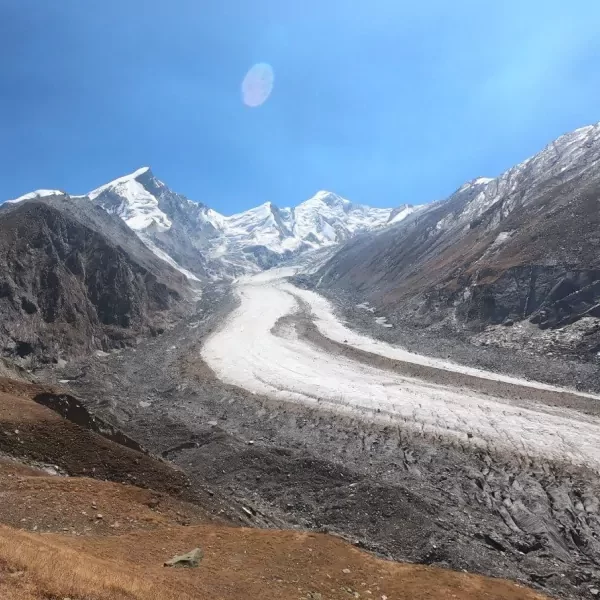Panch Kedar Yatra
Overview
Panch Kedar Trek
Panch Kedar Trek is a revered pilgrimage route in the Garhwal Himalayas of Uttarakhand, India, renowned for its religious significance and stunning natural beauty. Spanning approximately 170 kilometers, this challenging trek takes pilgrims to five sacred temples dedicated to Lord Shiva, collectively known as the Panch Kedar.
The journey begins at Sonprayag and progresses through picturesque villages, lush forests, and rugged mountain trails, offering breathtaking views of the Himalayan peaks along the way. The five temples visited during the trek are Kedarnath, Tungnath, Rudranath, Madhyamaheshwar, and Kalpeshwar, each holding its own mythological and spiritual significance.
Kedarnath, situated at an altitude of 3,583 meters, is the most prominent of the Panch Kedar temples and is revered as one of the twelve Jyotirlingas. Tungnath, the highest Shiva temple in the world at 3,680 meters, offers panoramic views of the surrounding peaks. Rudranath, Madhyamaheshwar, and Kalpeshwar are nestled amidst pristine Himalayan landscapes, providing a serene setting for spiritual reflection.
The Panch Kedar Trek is not only a test of physical endurance but also a journey of self-discovery and spiritual fulfillment. Pilgrims undertake this arduous trek to seek blessings and divine grace while immersing themselves in the tranquil beauty of the Himalayas. Whether for religious devotion or adventure, the Panch Kedar Trek promises an unforgettable experience amidst the majestic grandeur of the Himalayan mountains.
Key Points of Panch Kedar Trek
| Duration | Duration of the Panch Kedar Trek typically ranges from 15 to 20 days, depending on various factors such as trekking pace, weather conditions, and individual preferences. |
| Terrain Type | The trek involves varying terrain, including rugged mountains, dense forests, and high-altitude meadows. |
| Temperature | Temperatures can vary significantly, with cooler temperatures at higher altitudes and warmer temperatures in lower regions. It's essential to be prepared for cold weather, especially at night. |
| Altitude: | The trek covers altitudes ranging from approximately 2,000 meters (6,561 feet) to over 3,600 meters (11,811 feet). |
| Trek Weather | Weather conditions can be unpredictable in the Himalayas, with the possibility of rain, snow, and strong winds. It's crucial to check the weather forecast before embarking on the trek and to be prepared for changing weather conditions. |
| Best Time: | The best time to undertake the Panch Kedar Trek is during the summer months of May to June and the autumn months of September to October when the weather is relatively stable, and the trekking trails are accessible. |
| Trek Level: | The Panch Kedar Trek is considered to be a moderate to challenging trek, suitable for experienced trekkers who are physically fit and have some prior trekking experience at high altitudes. |
| Trek distance: | The total distance covered during the trek is approximately 170 kilometers (105 miles), including the distances between the five Kedar temples and the trekking route. |
| Group Size: |
The recommended group size for the Panch Kedar Trek is typically around 6 to 12 trekkers, providing a balance between personalized experience, effective communication, and logistical management during the journey. |
| Trek Fee | The ideal group size for the Panch Kedar Trek can vary depending on individual preferences and logistical considerations. However, smaller groups of around 6-12 trekkers are often preferred for a more personalized experience and better coordination during the trek. |
Trek Highlights of Panch Kedar Trek
- Sacred Pilgrimage: The Panch Kedar Trek is a sacred pilgrimage journey that takes pilgrims to five ancient temples dedicated to Lord Shiva, offering a unique spiritual experience amidst the stunning Himalayan landscapes.
- Scenic Beauty: The trek offers breathtaking views of the majestic Himalayan peaks, including Nanda Devi, Chaukhamba, and Kedarnath Dome, as well as pristine valleys, lush forests, and alpine meadows.
- Cultural Immersion: Trekking through remote villages and interacting with locals provides an opportunity to experience the rich culture and traditions of the Garhwali people, who have inhabited these mountains for centuries.
- Challenging Terrain: The trek presents varying terrain, from steep ascents to rocky trails, offering a challenge to trekkers and a chance to test their endurance and resilience.
- Wildlife Encounters: The region is home to diverse flora and fauna, including Himalayan musk deer, Himalayan black bears, and various bird species, providing opportunities for wildlife sightings along the trekking route.
- Historical Significance: Each of the five Kedar temples has its own historical and mythological significance, adding depth and meaning to the trekking experience for those interested in Hindu mythology and ancient Indian history.
- Personal Achievement: Completing the Panch Kedar Trek is a significant personal achievement for trekkers, as it requires physical stamina, mental determination, and a sense of adventure to navigate the challenging terrain and high altitudes.
- Spiritual Fulfillment: Many trekkers find spiritual fulfillment and inner peace during the Panch Kedar Trek, as they undertake a journey of self-discovery and reflection amidst the serene and tranquil Himalayan surroundings.
The altitude covered in Panch Kedar Trek
The altitudes of various locations along the Panch Kedar Trek:
- Sonprayag: Approximately 1,829 meters (6,001 feet)
- Gaurikund: Approximately 1,982 meters (6,503 feet)
- Kedarnath: Approximately 3,583 meters (11,755 feet)
- Ransi village: Approximately 2,000 meters (6,561 feet)
- Madmaheshwar: Approximately 3,497 meters (11,473 feet)
- Chopta: Approximately 2,680 meters (8,793 feet)
- Tungnath: Approximately 3,680 meters (12,073 feet)
- Chandrashila: Approximately 3,600 meters (11,811 feet)
- Punar Bugyal: Approximately 2,400 meters (7,874 feet)
- Rudranath: Approximately 2,286 meters (7,500 feet)
- Urgam village: Approximately 1,800 meters (5,906 feet)
- Kalpeshwar: Approximately 2,134 meters (7,001 feet)
Best Time to Visit Panch Kedar Trek
Best time to visit the Panch Kedar Trek is during the summer months of May to June and the autumn months of September to October. During this period, the weather is relatively stable with clear skies and comfortable temperatures, making trekking conditions ideal. The trails are accessible, and the surrounding landscapes are lush and vibrant, offering stunning views of the Himalayan peaks and valleys. Additionally, the pilgrimage sites are usually less crowded during these months, allowing for a more serene and spiritually enriching experience amidst the tranquil Himalayan environment.
This type of scene remains during the journey in Panch Kedar trek.
Along the Panch Kedar Trek, trekkers are treated to breathtaking views of the Himalayan peaks, including the majestic Nanda Devi, Chaukhamba, and Kedarnath Dome. The journey unfolds amidst lush forests teeming with diverse flora and fauna, offering glimpses of Himalayan musk deer, black bears, and colorful bird species. As trekkers ascend through alpine meadows and rocky trails, they are rewarded with panoramic vistas of pristine valleys, glistening glaciers, and cascading waterfalls. Each step reveals the awe-inspiring beauty of the Garhwal Himalayas, creating a truly immersive experience that captivates the senses and leaves a lasting impression of nature's grandeur.
The nearby places to visit during Panch Kedar Trek are as follows:
Nearby places to visit during the Panch Kedar Trek include:
- Ukhimath: A small town known for its temples and as the winter seat of Lord Kedarnath.
- Chandrashila Peak: A popular trekking destination near Tungnath, offering panoramic views of the Himalayas.
- Deoria Tal: A pristine lake surrounded by lush forests, offering stunning reflections of Chaukhamba peaks.
- Guptkashi: A pilgrimage town known for the ancient Vishwanath Temple and Ardhanarishvara Temple.
- Joshimath: A gateway to several trekking trails and the starting point for the popular Valley of Flowers trek.
- Chopta: Known as the "Mini Switzerland of India," offering beautiful meadows and views of snow-capped peaks.
- Gaurikund: The starting point for the trek to Kedarnath Temple, known for its hot springs and religious significance.
Is it safe
Yes, the Panch Kedar Trek is generally considered safe for trekkers who are well-prepared and follow safety guidelines. However, like any trekking expedition in the Himalayas, there are inherent risks associated with altitude, weather changes, and rugged terrain. It's essential to trek with a knowledgeable guide, carry proper gear including first aid kits and emergency supplies, and acclimatize properly to avoid altitude-related illnesses. Additionally, staying informed about weather forecasts and trail conditions, as well as registering with local authorities before embarking on the trek, can contribute to a safer and more enjoyable experience in the remote Himalayan region.
Difficulty level in Panch Kedar Trek
Panch Kedar Trek is considered to be of moderate to challenging difficulty. It involves trekking through rugged terrain, steep ascents, and rocky trails, which require a good level of physical fitness and endurance. The high altitudes reached during the trek can also pose challenges such as altitude sickness, requiring proper acclimatization. Weather conditions in the Himalayas can be unpredictable, with the possibility of rain, snow, and strong winds adding to the difficulty. However, with adequate preparation, including physical training, proper gear, and guidance from experienced trek leaders, adventurers can overcome these challenges and enjoy the rewarding experience of the Panch Kedar Trek.
Weather conditions in Panch Kedar Trek
Weather conditions along the Panch Kedar Trek can vary significantly depending on the season and altitude. During the summer months of May to June and the autumn months of September to October, the weather is generally stable with clear skies and moderate temperatures, making it an ideal time for trekking. However, trekkers should be prepared for sudden changes in weather, including rain, snow, and strong winds, especially at higher altitudes. It's crucial to check the weather forecast before embarking on the trek and to carry appropriate clothing and gear to stay warm and dry in varying weather conditions.
Things to carry in Panch Kedar Trek
Here are some essential items to carry for the Panch Kedar Trek:
- Clothing:
- Layered clothing for varying weather conditions (including thermal innerwear, fleece jackets, and waterproof outer shell)
- Trekking pants and shorts
- T-shirts and long-sleeved shirts
- Woolen socks and sturdy trekking shoes
- Hat or cap for sun protection
- Gear and Equipment:
- Backpack with rain cover
- Sleeping bag suitable for cold temperatures
- Trekking poles for stability
- Headlamp or flashlight with extra batteries
- Sunglasses with UV protection
- Water bottles or hydration system
- First Aid Kit:
- Basic first aid supplies (bandages, antiseptic cream, pain relievers)
- Personal medications
- High-altitude sickness medication (if required)
- Other Essentials:
- Sunscreen and lip balm with SPF protection
- Insect repellent
- Personal toiletries (toothbrush, toothpaste, biodegradable soap)
- Lightweight towel
- Camera or smartphone for capturing memories
- Miscellaneous:
- Trekking permit or necessary documentation
- Map or GPS device for navigation
- Personal identification and emergency contact information
How to Reach in Panch Kedar Trek
- By Air: To reach the starting point of the Panch Kedar Trek, Sonprayag, by air, you would first need to arrive at the Jolly Grant Airport in Dehradun, Uttarakhand. From the airport, you can either hire a taxi or take a bus to reach Sonprayag.
- By Road: Sonprayag is well-connected by road to major cities and towns in Uttarakhand and neighboring states. You can reach Sonprayag by taking a bus or hiring a taxi from cities like Rishikesh, Haridwar, Dehradun, or Delhi. The road journey offers scenic views of the Himalayan landscape and takes approximately 8-10 hours from Rishikesh or Haridwar.
- By Railway: The nearest railway stations to Sonprayag are Rishikesh and Haridwar. Both stations are well-connected to major cities in India, including Delhi, Mumbai, Kolkata, and Chennai, with regular train services. From Rishikesh or Haridwar railway station, you can hire a taxi or take a bus to reach Sonprayag, which is approximately 200-220 kilometers away and takes around 8-10 hours by road.
Short itinerary of This Trek
| Day 1 | Rishikesh to Sonprayag |
| Day 2 | Gaurikund to Kedarnath |
| Day 3 | Rest day |
| Day 4 | Kedarnath to Gaurikund to Ransi village |
| Day 5 | Trek to Nanu |
| Day 6 | Trek to Madhmaheshwar |
| Day 7 | Trek down to Ransi village |
| Day 8 | Tungnath to Chandrashila to Saggar village |
| Day 9 | Trek to Panar Bugyal |
| Day 10 | Punar Bugyal to Rudranath |
| Day 11 | Rudranath to Urgum village |
| Day 12 | Kalpeshwar to Urgam |
| Day 13 | Urgum to Rishikesh |
Included/Exclude
- Forest Permit and entrance fee
- Accommodation in Hotel on twin share basis
- All meals: breakfast, packed lunch, tea, coffee, snacks, soup and Dinner
- Good Experience Local Trek Leader guide and Technical guide
- Medical Kit
- Oxygen Cylinders
- Personal Insurance
- Medical Certificate
- Personal toiletry Items
- Personal Medicine kit
Tour Amenities
Related Tours
- Quality5
- Amenities5
- Services5
- Price5
Chopta Tungnath & Chandrashila Trek
Review Scores
Best Deals

Mountains

Himalaya
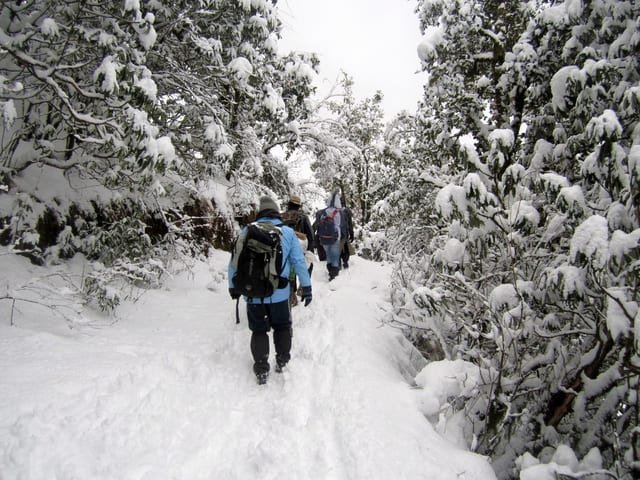
Expeditions



